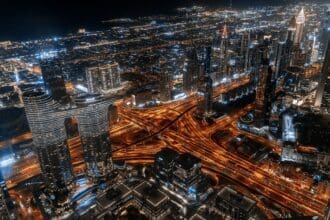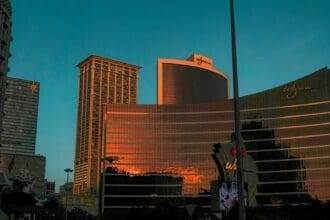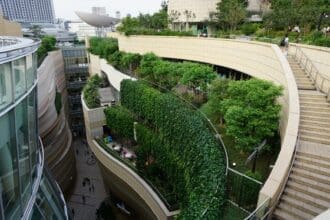The Covid-19 pandemic became an unexpected catalyst for Dubai’s property market. Instead of a projected downturn, the city experienced a market boom, fueled by its successful health policies, an influx of international investors, and the liberalization of visa regulations. This period not only gave rise to a new generation of residential communities but also outlined new, more complex rules for investment success.
Content
The Covid Era: A Data-Confirmed Market Boom
Since 2019, the Dubai market has shown remarkable resilience. According to official data from the Dubai Land Department (DLD), 125,538 transactions were registered in the first half of 2025, with a total value of AED 431 billion. This represents a 26% increase in the number of deals and a 25% rise in their value compared to the same period in 2024. The market is supported by a strong influx of new buyers—59,000 new investors entered the market in the first six months of 2025, 45% of whom are UAE residents.
This growth is primarily driven by two factors:
- Global Drivers: Favorable visa policies like the Golden Visa, which offers a 10-year residency for a property investment of AED 2 million or more, have turned Dubai into a magnet for international buyers. The absence of property and inheritance taxes also enhances the market’s attractiveness.
- Economic Stability: The UAE’s economy is projected to grow by 5.1% in 2025, supported by a stable tourism sector and strategic initiatives.
Despite the strong performance, the market is not without risks. The enormous volume of new construction—Fitch Ratings forecasts that around 210,000 new homes will be completed in 2025 and 2026—has led analysts to warn of a potential price correction of 10% to 15%.
The Luxury Segment as a Market Driver
The luxury property market is the main engine of growth.
- Price Growth: Knight Frank projects that prices in the prime segment will increase by 5% in 2025 due to limited supply and a growing population. According to CBRE, overall residential prices have risen by nearly 14% year-on-year as of June 2025.
- Super-Prime Deals: Dubai is the global leader in sales of properties valued at over $10 million. In the first quarter of 2025, 111 such deals were recorded, placing the emirate at the top of the global rankings for the fifth consecutive quarter. In the second quarter, this number grew to 143 transactions worth $2.6 billion.
This trend is most evident in areas like Dubai Marina, Business Bay, Burj Khalifa, and Palm Jumeirah, which led the charts for transaction value in the first half of 2025.
The New Factors for a Successful Investment
Post-Covid market analysis has revealed several crucial criteria that now define the potential of a property investment in Dubai.
1. Quality of Planning vs. Mass Construction
Market observations indicate that projects with excessive density and tight “back-to-back” configurations may reach their price ceiling faster. Buyers increasingly value personal space. Projects with more generous green areas, parks, and pedestrian walkways (known as sikka) are typically valued higher and have greater potential for long-term growth.
2. Segregation of Apartments and Villas
A clear distinction between apartment and villa zones remains a winning formula. Projects that mix property types and create high population density often diminish the appeal of luxury villas in the eyes of end-users seeking privacy and tranquility.
3. Real vs. “Fake” Infrastructure
The presence of functioning, high-quality infrastructure—international schools, clinics, shopping centers, and parks—is what creates real and sustainable demand. Investors should be cautious of projects that rely solely on future but not yet realized infrastructure promises.
What Does This Mean for the Future?
The Dubai market is more mature and segmented than ever. The era of easy profits from mass-produced developments is fading. The future belongs to well-planned communities that offer quality of life and real value. For today’s investor, it is crucial to analyze not just the price but also the volume of supply in the specific segment, demographic trends, and the developer’s quality. Real returns will come from informed decisions, not speculative expectations.
You might also like:
- Buying a property in Malaga – why prices are rising and the investment is worth it
- How to analyse location: 7 factors that determine future growth
- How to Buy Property in Greece (for EU & Non‑EU Citizens)
This post is also available in: Български







